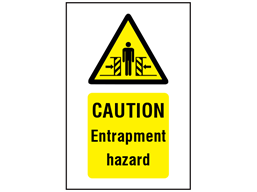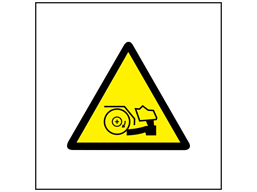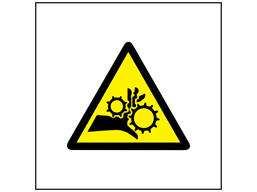
In working life, there are a number of hazards an employee can encounter on a day-to-day basis. This increases when somebody works in a factory or manufacturing setting, mainly due to the machinery they work with.
Machinery brings with it unique dangers, with one of these being machinery entrapment. Machinery entrapment can be costly for both human life and company pockets, so it’s important that employers know how to prevent it.
Below, we discuss the meaning of trapping hazards, how to prevent entrapment and the cost of employers ignoring the dangers of their own machinery.
Entrapment Hazard Definition
For many people, an entrapment hazard can become their worst nightmare. An entrapment hazard is defined as something or somewhere that could trap the worker. An example of this is a confined space, where workers can become stuck.
So, what is machinery entrapment? Machinery entrapment refers to when a worker’s limb is caught in a machine – this can be anything from warehouse equipment to vehicles. Scary stuff, right?
How to Prevent Entrapment in the Workplace
The solution to preventing entrapment in the workplace is threefold: risk assessments, good training and proper labelling.
A proper risk assessment means reviewing each piece of equipment and listing:
- The best ways to prevent injury.
- The type of injury that is likely to occur.
- The response in the event an injury occurs.
As part of this risk assessment, labelling should be mentioned. It is important that entrapment hazards in all working places are clearly marked. If there is a chance that a worker could be hurt by possible entrapment in any area, to comply with health and safety requirements, there should be sign warning workers of the risk.
Case Study
In 2017, Warburtons were fined 1.9million for an entrapment hazard which caused a worker to sustain significant friction burn which required a skin graft. Mr. Thrope passed away in the hospital less than two weeks later, though doctors stated this was due to a kidney infection and heart condition, not the friction burn.
Mr. Thrope had decided to clean dough which had fallen in between the tins when his right arm became entrapped between the conveyer belt and the molder. There were no signs displayed which warned this Warburton worker of the entrapment hazard at hand and no buttons which could be reached easily if someone was trapped by this machine.
This is a clear example of why entrapment hazards should be considered utmost importance and employers should avoid accidents like this at all costs.
Entrapment Hazard Labels
Label Source stock plenty of high-quality entrapment hazard labels which will notify all workers of potential areas and machinery which could cause accidents.
Here's a look at some of the range:

Self-adhesive Vinyl or Rigid Plastic

Self-adhesive vinyl or rigid plastic

Self-adhesive vinyl or rigid plastic
Browse High-Quality Entrapment Hazard Labels Today
Entrapment hazard labels are essential for workplaces that use machinery. Browse a range of entrapment hazard labels in our machine hazard sign range today. We also stock a variety of safety signs.
Consider checking out our other blog content, such as our post Asphyxiation: What is Confined Space?, which may interest you.
If you would like any help or to ask us about any custom-made safety labels, just get in touch on 0800 3761 693.